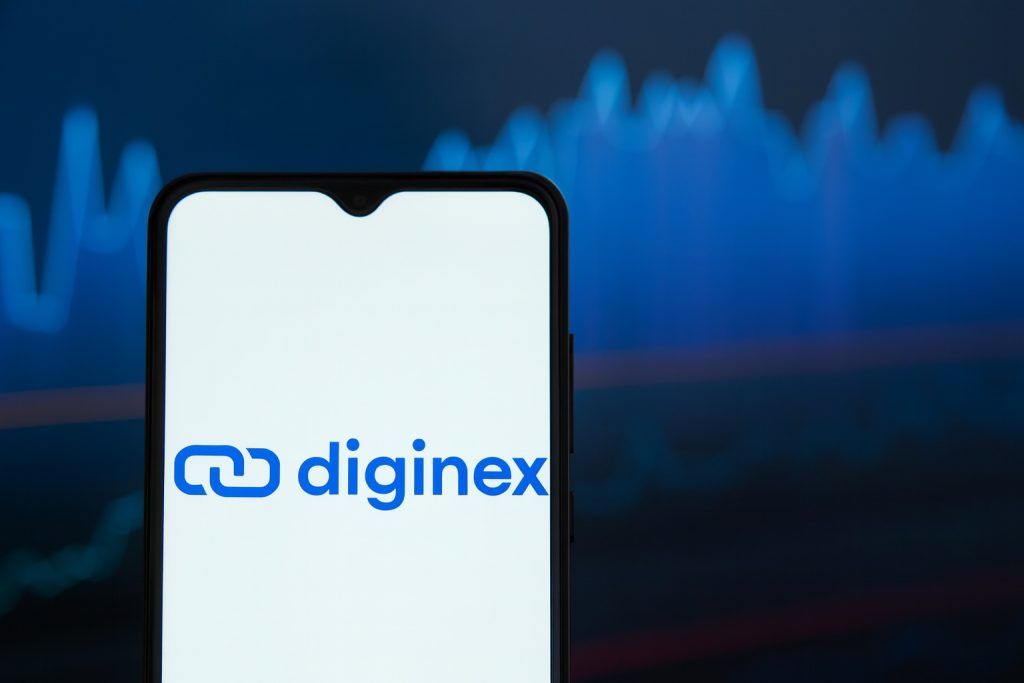- Skyrocketing Stock in 2025: Mercurity Fintech Holding (NASDAQ: MFH) has surged over 330% year-to-date in 2025, and an astonishing ~1,472% in the past year, vastly outperforming the S&P 500 [1]. Shares recently hit an all-time high around $30 after trading near $1 a year ago [2].
- Crypto Treasury Pivot: MFH has reinvented itself as a “blockchain-native” fintech, allocating capital to a $500 million on-chain treasury focused on cryptocurrencies (especially Solana) [3] [4]. In mid-2025 it announced a $43.7 million stock-and-warrant offering (at $3.50/share) to fund this crypto treasury strategy [5] [6] – aiming to earn staking yields and tokenized investment income. (That offering was later shelved due to market volatility.)
- Aggressive Capital Moves: After an initial funding plan stumbled, MFH secured a $200 million equity credit line from Solana Ventures to back its strategy [7] [8]. It also raised $6 million in a private placement in August [9] and even approved a $10 million share buyback – signaling confidence in its long-term plan despite dilution concerns [10]. These moves strengthened MFH’s balance sheet for its crypto initiatives.
- Index Inclusions & Institutional Visibility: In 2025, MFH joined the Russell 2000 index (June) and the S&P Global Broad Market Index (BMI) (September) [11]. As a result, passive index funds managed by BlackRock, State Street, Vanguard, and others now hold MFH shares [12] [13]. The company reports roughly 80 institutional holders post-index inclusion [14], bringing greater liquidity and visibility (though largely via mechanical index buying).
- Improving but Small Financials: MFH’s 2024 revenue was only $1.01 million (up 126% from $446k in 2023) with a net loss of $4.5 million (narrowed by ~52% year-over-year) [15]. Despite this tiny revenue base, MFH’s recent market cap ballooned to about $2 billion [16] – a valuation many view as “extremely stretched” given its micro-scale financials [17]. The company’s operations (digital asset solutions, AI/HPC infrastructure, and broker-dealer services) remain nascent, and profitability is still a distant goal.
- Macro and Regulatory Wildcards: MFH’s fortunes are tied to the crypto market’s boom in 2025 (Bitcoin above $120k, Solana ~$220 [18] [19]) which has boosted its crypto holdings’ value. However, crypto volatility and evolving regulations pose risks. Observers warn that MFH’s pivot to Solana staking and AI “lacks traction… with low revenue and rising regulatory risks clouding its outlook” [20]. Any crackdown on digital asset treasury practices or DeFi could impact its strategy [21].
- High-Risk/High-Reward Outlook: Bulls argue MFH is pioneering a new model of corporate crypto treasury and could reap outsized returns if its “blockchain-first” vision succeeds [22] [23]. The company’s Chief Strategy Officer touts aligning treasury management with institutional-grade safeguards and yield generation on crypto assets [24] [25]. Yet skeptics note the stock’s parabolic rise far outpaces fundamentals, making MFH a speculative bet. Overall, MFH offers a bold growth story with significant risks, suitable only for investors with high risk tolerance.
MFH’s 2025 Surge: Stock and Financial Performance
Mercurity Fintech Holding’s stock has been on a tear in 2025, cementing its status as one of the year’s top micro-cap performers. After starting the year in the single digits (adjusted for splits), MFH shares recently hit $29.41 (as of early October 2025) [26]. Year-to-date the stock has climbed over 330% (vs ~14% for the S&P 500) and is up roughly 1,400% from a year ago [27]. This explosive rally accelerated in the second half of 2025, coinciding with a crypto market boom and a flurry of corporate developments (detailed below). The stock’s 52-week range – from about $1.03 to $30.27 – underscores the extreme volatility [28]. Notably, MFH spiked +36% in a single day on Oct 3, 2025 [29] after positive news, illustrating its high-beta, news-driven nature (the stock’s beta is listed above 8 [30], reflecting outsized swings).
Financial results remain the key concern behind the meteoric stock gains. For full-year 2024, MFH reported revenue of just $1.01 million (albeit more than doubling from $0.45 M in 2023) [31]. The company is still operating at a loss, though it significantly narrowed its net loss to -$4.53 million in 2024, about half the prior year’s loss [32]. This improvement suggests tighter cost control or early revenue from new initiatives, but MFH is far from profitability. Even with likely growth in 2025, its revenue base is extremely small relative to its current multibillion-dollar market capitalization. In fact, MFH’s market cap soared to roughly $2.0 billion in October 2025 [33], a figure that implies very rich valuations (hundreds of times sales). As one analysis pointed out, MFH is trading at “extremely stretched valuation levels” compared to peers given its minimal revenues [34]. This disconnect between fundamentals and market value flags considerable downside risk if the company fails to execute perfectly on its growth plans.
That said, MFH’s financial trend is moving in the right direction, with lower losses and faster growth from a small base. The company’s strategy shift (discussed below) aims to create new revenue streams from digital asset yields and financial services, which could start contributing in late 2025 and beyond. For now, however, investors appear to be valuing MFH more on its crypto assets and potential than on traditional metrics. The stock’s 2025 rally has in part tracked the crypto market’s resurgence – indicating MFH is trading as a proxy for blockchain/crypto exposure as much as a conventional fintech stock.
Key 2025 Developments and News
MFH’s dramatic year has been punctuated by major strategic announcements and corporate actions, especially in the second half of 2025. These developments help explain the stock’s volatility and provide clues to its future direction:
- Pivot to a Crypto “Treasury” Strategy: In mid-2025, Mercurity Fintech unveiled an ambitious pivot from being a niche fintech into a crypto asset manager for its own balance sheet. In July, the company filed a 6-K confirming the launch of a $500 million “DeFi Basket” treasury fund [35]. This internal fund – effectively MFH’s corporate treasury – will invest in a basket of digital assets. The plan emphasizes a “Solana-first” strategy, with MFH intending to accumulate a large position in Solana (SOL) tokens and operate validator nodes to earn staking rewards [36] [37]. The treasury will also diversify into other top crypto assets (Ethereum, Cardano, XRP, BNB) under strict risk management guidelines [38] [39]. Management described this as a shift toward direct on-chain financial infrastructure and active participation in DeFi (decentralized finance) ecosystems [40]. In essence, MFH is remaking itself into a hybrid of an investment fund and fintech platform, using its capital to generate crypto yields. CEO Shi Qiu and Chief Strategy Officer Wilfred Daye have articulated a vision to “bridge traditional finance and digital innovation” through compliant, institutional-grade crypto treasury operations [41] [42]. By evolving beyond just offering fintech services into holding and managing crypto assets, MFH hopes to both bolster its balance sheet and showcase its expertise in blockchain finance.
- Capital Raises and Balance Sheet Moves: To bankroll this crypto-centric strategy, MFH pursued multiple funding avenues in 2025. The most notable was a registered direct offering for $43.7 million announced in July. The company had lined up institutional investors (including blockchain-sector funds LTP, Syntax, OGBC, and Blockstone) to purchase 12.485 million new shares + warrants at $3.50 per share [43] [44], injecting cash for the “crypto treasury” plan. Initially, this news was seen as a positive sign of investor interest in MFH’s vision [45] [46]. However, shortly after, MFH encountered turbulence – by late July it announced that the offering “would not proceed” due to unfavorable market conditions and failure to meet closing conditions [47]. The abrupt cancellation spooked the market, and MFH’s stock plunged as much as 70% intraday amid the uncertainty [48] [49]. This episode highlighted the fragility of investor confidence and the challenge of issuing shares in a volatile sector. In response, MFH’s management took a “strategic resilience” approach: they pivoted to alternate financing and shoring up investor trust [50]. First, MFH secured a $200 million Equity Line of Credit with Solana Ventures Ltd. [51]. This essentially gives MFH the right (but not obligation) to draw down capital by issuing equity to Solana Ventures over time. Framed as a “strategic investment”, the Solana Ventures deal positions MFH as a long-term institutional player in the Solana ecosystem [52] [53]. It’s a vote of confidence from a major blockchain backer, and provides a potential war-chest as needed – though MFH will only draw funds if market conditions allow. Next, MFH initiated a share buyback program up to $10 million (announced July 22) to “strengthen confidence” in its Solana/Bitcoin treasury strategy [54]. The planned repurchases (over 12 months) signaled to investors that management believed the stock was undervalued after the selloff, and that it was committed to limiting dilution [55] [56]. Buybacks are unusual for a money-losing microcap, but MFH used it as a tool to stabilize prices and underscore conviction in its plan. Finally, MFH completed a smaller private placement in August, raising $6 million from institutional investors [57]. This brought in some immediate cash to “further advance the Digital Asset Treasury strategy” [58]. CEO Shi Qiu noted the financing came from “strong institutional investors who recognize [our] value proposition,” providing capital to keep executing the strategy and driving long-term shareholder value [59]. In short, MFH navigated a funding rollercoaster in 2025 – from a failed offering to alternative funding – ultimately bolstering its balance sheet to pursue its crypto initiatives.
- Partnerships and Business Initiatives: Alongside raising capital, MFH struck partnerships and rolled out initiatives to support its new focus. It launched collaborations through its subsidiary Chaince Securities (a FINRA-registered broker-dealer) to bridge traditional and digital finance. For instance, in September Chaince was appointed exclusive placement agent for a $2.6 M private raise by Trident Digital Tech, a blockchain startup [60]. Chaince also announced a strategic collaboration with OGBC Group to launch a digital asset treasury fund strategy, aiming to help other companies raise funds for crypto treasury programs [61]. These moves position MFH not just to invest its own treasury, but to advise and facilitate crypto-capital markets activities for clients, potentially adding fee revenue. MFH is also looking at tokenization projects – e.g. Chaince is advising a U.S. mining company on tokenizing gold assets in Latin America [62] [63]. This aligns with MFH’s goal to integrate real-world assets with blockchain. Additionally, MFH’s leadership has been actively promoting its thought leadership. The Chief Strategy Officer, Wilfred Daye, published an article on “Digital Asset Treasuries” in CoinsPaid Media, outlining how companies can engineer yield on crypto treasuries while managing risks [64] [65]. He emphasized evolving beyond a simple buy-and-hold approach, and outlined MFH’s philosophy of “risk-aware accumulation” and “financing discipline” when leveraging crypto assets [66]. Daye and even new board members (like Peter Nobel, a sustainability leader who joined MFH’s board [67]) have appeared on platforms like Bloomberg TV’s New to The Street to discuss MFH’s objectives [68]. Collectively, these developments show MFH actively building an ecosystem around its crypto-finance niche – from raising its profile in media, to forging industry partnerships, to broadening its service offerings via Chaince. Each piece is intended to bolster MFH’s credibility and potential revenue streams in the blockchain/fintech arena.
- Index Inclusion and Institutional Attention: A pivotal development in 2025 was MFH’s addition to major stock indices, which markedly raised its institutional ownership. Effective June 26, 2025, MFH was added to the Russell 2000 (a widely tracked small-cap index) [69]. Then in September, S&P Dow Jones Indices included MFH in the S&P Global Broad Market Index (BMI) – a benchmark that covers 99% of global market cap [70]. These inclusions are passive in nature (driven by market cap and float criteria), but they had concrete effects: index funds and ETFs that track these indices had to buy MFH shares, increasing demand for the stock. The company noted that by September, around 80 institutional investors (including major index funds and ETFs) held MFH [71]. In an August press release, MFH highlighted that recent 13F filings show holdings by giants like BlackRock, Geode (Fidelity), State Street, Vanguard, and Northern Trust – as well as notable pension funds (CalSTRS, NJ Police & Fire, NY State Common fund) [72]. These institutions likely acquired MFH to mirror index weights, not due to active stock-picking conviction. MFH’s CEO acknowledged that “much of this activity is potentially index-related” rather than a deliberate endorsement [73]. Nonetheless, he called the expanding institutional base “exciting,” noting it brings liquidity and puts MFH “in front of a wider investment community” [74]. Importantly, MFH cautioned that index-driven buys “should not be viewed as a strategic endorsement” of the company [75]. In other words, passive ownership ≠ institutional bullishness. Still, the index inclusions have undeniably increased MFH’s visibility and trading volume. They also underscore MFH’s transformation from an obscure microcap into a company that meets the criteria (market cap, liquidity, etc.) for mainstream equity benchmarks. This heightened profile could help MFH tap capital markets more easily in the future – but it also means greater scrutiny.
In summary, 2025 has been transformative for Mercurity Fintech. The company rolled out a bold new crypto-treasury strategy, secured funding (amid some hiccups), engaged in partnerships, and gained a foothold in major indexes. Each piece of news tended to send the stock swinging: good news (index additions, funding deals, partnerships) generally fueled big rallies, while setbacks (a pulled offering, dilution fears) led to sharp selloffs. MFH’s journey this year exemplifies the boom-and-bust dynamics of blockchain-related stocks – riding on market sentiment, hype, and hope, as much as on concrete financial results.
Future Outlook: High Hopes vs. High Risks
Looking ahead, MFH stands at the intersection of immense opportunity and significant uncertainty. The company’s future prospects will depend on both execution of its strategy and external market/regulatory conditions:
Growth Drivers & Opportunities: MFH has positioned itself in front of several powerful trends. First, the crypto bull market of 2025 provides a tailwind. Bitcoin’s price has reached new highs (over $120k), and Solana – MFH’s favored asset – surged above $220 with growing institutional adoption [76] [77]. As a result, MFH’s crypto treasury (once deployed) could appreciate substantially, and staking yields on SOL (and other assets) are lucrative in a rising market. If MFH manages to accumulate a sizeable Solana position early, the staking income and capital gains on that treasury could materially strengthen its financial position. Additionally, MFH is arguably a first mover in corporate DeFi integration. The idea of actively managing a crypto treasury for yield is still novel for public companies. Should this approach succeed, MFH could become a template for others (similar to how MicroStrategy became known for its Bitcoin treasury strategy). MFH’s team highlights plans to build “programmable treasury reserves” and “real-time capital deployment” using blockchain [78], which suggests it aims to develop unique fintech IP around on-chain treasury management. There is also potential for ancillary revenue if MFH leverages its expertise to advise or manage digital assets for other firms (much like an asset manager or fintech service provider). The company’s broker-dealer unit (Chaince) could facilitate token offerings, custody, or structured products, tapping into the nascent demand for tokenizing real assets or raising crypto capital. Moreover, MFH’s index inclusions and higher profile could help attract strategic partners or institutional investors beyond the passive holders. For instance, the partnership with Solana Ventures might lead to deeper collaboration in the Solana ecosystem (perhaps co-investing in projects or tech development). If MFH can demonstrate progress – e.g. growing its on-chain treasury income, securing fintech clients, or even achieving breakeven with new revenue – it could validate its lofty valuation and further propel growth. Bulls argue that MFH is on the cusp of a breakthrough, with one commentary noting that for investors with a long horizon and appetite for risk, “Mercurity’s approach offers compelling upside”, as its Solana partnership and DeFi deployment could generate recurring income and position it at the forefront of blockchain finance [79] [80].
Challenges & Risk Factors: Despite the optimistic narrative, MFH faces substantial risks that temper its outlook. A primary concern is the regulatory environment. Governments and regulators worldwide are ramping up oversight of crypto assets, DeFi, and fintech-banking intersections. MFH’s business – straddling securities (via Chaince) and crypto investments – could draw regulatory scrutiny on multiple fronts. For example, if MFH’s on-chain treasury is deemed to make it an “investment company” (under the Investment Company Act) or if its token-related activities are seen as offering unregistered securities, it might face compliance burdens or restrictions. The company itself acknowledges in filings that evolving regulations and uncertainties are significant risk factors [81]. One analyst warned that Mercurity’s pivot “lacks traction” so far, with “rising regulatory risks clouding its outlook” [82]. In the U.S., the SEC and other agencies are actively examining crypto staking programs, stablecoins, and treasury-management of digital assets – any new rule or enforcement action could impact MFH’s strategy (for instance, if staking rewards were curtailed or heavily taxed, or if corporate crypto holdings required additional disclosure and capital requirements).
Another risk is crypto market volatility and execution risk. MFH is effectively becoming an investment vehicle; its fortunes will fluctuate with the value of its crypto holdings. A sharp downturn in crypto prices (which are famously volatile) could erode MFH’s asset base and, by extension, investor confidence. Even within the crypto sector, MFH’s heavy focus on Solana is a double-edged sword. Solana is a high-performance blockchain but has faced technical outages and its reputation suffered in the 2022 cycle; it’s also one of many smart contract platforms in a competitive field. If Solana’s technology or adoption falters, MFH’s concentrated bet could backfire. The VisionSys AI episode is a cautionary tale: another Nasdaq-listed firm, VisionSys AI, announced an even larger Solana treasury plan ($2 billion) in October 2025, only to see its stock plunge 57% intraday on the news amid investor skepticism [83]. (VisionSys stock later trimmed losses, closing 7% down, but the shock reflected wariness of such aggressive crypto bets.) As one observer put it, that was a “stark reminder of the risks when public firms dive into crypto” [84]. MFH must convince investors that it can manage those risks better and avoid a similar fate. Thus far, MFH’s own share price has reacted favorably to its Solana-centric moves, but it remains highly sensitive to sentiment swings.
Valuation is another concern. With MFH’s market cap near $2 billion and trailing revenue just ~$1 million, the company is priced for hyper-growth and successful execution. Any delays or disappointments (e.g. lower yield from its treasury, or slower uptake of its fintech services) could trigger a severe correction. Short interest and volatility are likely to remain high. From an investment standpoint, MFH represents a speculative, high-beta play rather than a fundamentally grounded value. Even the company’s CEO has been careful to frame recent institutional buying as largely passive, to prevent over-interpretation [85]. It’s worth noting that no major Wall Street analysts officially cover MFH yet (reflecting its micro-cap past), so the stock’s narrative is driven more by company press releases and retail investor speculation than by independent analysis.
Expert Views and Predictions: The divide between MFH’s bulls and bears is stark. Optimistic analysts (largely from fintech and crypto circles) argue MFH could transform into a mini-BlackRock of digital assets, leveraging its first-mover advantage in on-chain treasury management. They highlight MFH’s “strategic resilience” in adapting after its failed offering and aligning with industry trends like AI and DeFi integration [86] [87]. They also point to macro tailwinds: as blockchain gains institutional traction and if interest rates remain high, companies seeking yield might turn to crypto treasuries – a trend MFH can ride. On the other hand, skeptics caution that MFH’s rally has been hype-fueled. One Seeking Alpha author flatly noted that MFH’s valuation is unjustifiable on fundamentals, and that its much-touted Solana/AI pivot so far hasn’t produced tangible business results [88]. Without substantial revenue in 2025–26, MFH could face dilutive capital raises (despite management’s efforts to minimize that). The broader fintech sector also presents a sobering backdrop: since the post-2021 market correction, investors have favored profitable, proven business models over speculative growth. Many fintechs have had to pull back on grand expansions and focus on core earnings. “Investors now prioritize ‘monetization, unit economics, and operational discipline’ over rapid expansion,” notes the 2025 Global Fintech Report [89]. MFH’s story runs somewhat counter to that trend – it is betting on a new paradigm rather than demonstrating strong unit economics today. This makes it exciting but also precarious if the market’s mood shifts toward risk-off.
Currently, there are no formal Wall Street price targets or EPS estimates for MFH. However, some AI-driven prediction tools and retail investor forums remain bullish. (For instance, an Intellectia AI stock model recently rated MFH a “Strong Buy,” citing its momentum and crypto synergy, though such automated calls should be taken with caution.) Perhaps more telling is how MFH’s own management speaks about the future. In public statements, CEO Shi Qiu emphasizes building long-term shareholder value through innovation and prudent risk management. “As we continue executing our Digital Asset Treasury initiatives…we aim to drive long-term value for our shareholders,” Qiu stated after the August financing [90]. CSO Daye has outlined principles to avoid “shareholder-value-destructive issuance” and ensure transparent, risk-managed growth [91] – a tacit acknowledgement of investor dilution fears and the need to grow responsibly. These remarks indicate management is aware that credibility will be earned through delivery, not just bold plans.
Bottom Line: The next 12–18 months will be crucial in determining whether MFH can justify its blockbuster 2025 performance or if it will unravel under the weight of expectations. The company needs to execute – deploying its crypto treasury effectively, securing returns from staking/yield, expanding its fintech services, and staying on the right side of regulators. If it does, MFH could evolve from a story stock into a genuine leader in the crypto-fintech convergence, potentially opening up new avenues of growth (and possibly attracting larger partners or acquirers in the fintech or crypto exchange space). If it falls short, the downside could be severe given how much optimism is baked into the share price.
Industry Context: MFH vs. Fintech and Crypto Peers
Mercurity Fintech’s strategy and meteoric stock rise are unusual, but not without context. It sits at the crossroads of several sectors – blockchain/crypto, financial services, and high-growth fintech – and invites comparison to both tiny crypto players and large established firms:
Micro-Cap Crypto Peers: MFH is part of a new breed of small public companies pivoting to crypto treasury or blockchain strategies. Besides the aforementioned VisionSys AI (with its bold Solana treasury plan) [92], there are others exploring similar territory. For example, BTCS Inc. (NASDAQ: BTCS) is a micro-cap that transformed into a “Blockchain Technology Solutions” firm focusing on staking-as-a-service and maintaining a portfolio of crypto assets. Another is Mawson Infrastructure (NASDAQ: MIGI), originally a bitcoin miner that diversified into digital asset management. These companies, like MFH, often trade more on crypto market sentiment than on earnings. They also face the challenge of implementing enterprise-level risk management with very limited resources. So far, MFH has distinguished itself by attracting high-profile partners (Solana Ventures) and index inclusion – a combination that many micro-cap peers lack. However, volatility is a hallmark for all these players. Sudden stock spikes and crashes on news (or even social media chatter) are common. MFH’s 2025 trajectory – up ~15-fold at one point – is reminiscent of previous speculative episodes (e.g. the 2017 “blockchain” craze when tiny stocks rebranded and briefly soared). The difference in 2025 is that MFH has a somewhat concrete plan and real backing, whereas many 2017-era pivots were empty name changes. Still, investors should be mindful that micro-cap blockchain stocks have historically been high-risk, boom-bust propositions.
Established Fintech Giants: On the other end of the spectrum, one might compare MFH’s crypto foray to how larger fintech companies are engaging with digital assets. PayPal (NASDAQ: PYPL) and Block, Inc. (formerly Square, NYSE: SQ) are two prominent fintechs that have integrated crypto, albeit in more measured ways. PayPal in 2021 enabled buying and selling of cryptocurrencies for its hundreds of millions of users, and in 2023 it launched its own U.S. dollar stablecoin (PYUSD) to facilitate payments [93]. Block’s Cash App has long allowed Bitcoin trading, and Block’s CEO (Jack Dorsey) is a vocal Bitcoin proponent investing in decentralized tech. However, neither PayPal nor Block has put a significant portion of their corporate treasury into crypto assets – a key distinction from MFH. Their approaches focus on offering crypto services to customers (thus generating transaction revenue or enhancing their platforms), rather than using corporate funds to speculate on crypto. In fact, large fintechs are under shareholder pressure to prioritize earnings; PayPal’s stock, for instance, struggled in 2022–25 due to competition and margin concerns, leading it to refocus on core payment business. In this context, MFH’s strategy is quite radical – more akin to MicroStrategy (NASDAQ: MSTR), the mid-sized software firm that famously converted its balance sheet into Bitcoin. MicroStrategy’s stock became heavily correlated with Bitcoin’s price, delivering big gains in crypto bull markets and steep losses in downturns. MFH is following a similar path but with Solana and DeFi strategies, and without a stable legacy business to fall back on (MicroStrategy at least had software revenues).
Comparing MFH to crypto-native companies: MFH can also be measured against crypto-sector public companies like Coinbase (NASDAQ: COIN), Galaxy Digital, or Bitcoin miners like Marathon Digital (MARA). Coinbase is a large exchange with billions in revenue but its stock swings with crypto cycles (it rallied in 2025 as crypto volumes rebounded). MFH, by contrast, is not an exchange or miner but rather a hybrid investor/advisor. If anything, MFH’s closest analogs might be emerging crypto asset managers or DeFi platforms – however, most of those are either private or on blockchain (DAOs, etc.) rather than listed equities. This makes MFH somewhat unique on public markets: it offers exposure to DeFi yields and on-chain assets through an equity investment. For investors unwilling or unable to directly hold crypto, a stock like MFH might appear as a proxy (though with its own idiosyncratic risks).
Competitive Landscape: It’s worth noting that if MFH’s concept gains traction, competition could increase. Established asset managers or fintechs might launch similar crypto treasury programs or investment products. Large banks are tiptoeing into crypto custody and tokenization of assets (e.g. JPMorgan’s Onyx platform, Goldman’s crypto services). If regulators provide clearer guidelines, bigger players could quickly overshadow microcaps like MFH by offering institutional-grade crypto yield products or treasury management for corporations. MFH’s advantage is being early and nimble, but it will need to scale up and perhaps specialize (for instance, focusing on a niche like Solana-based institutional services) to fend off competition. The company’s emphasis on AI and HPC (high-performance computing) infrastructure in its profile suggests it aims to stay at the cutting edge technologically – possibly leveraging AI for trading algorithms or risk management in its treasury. If MFH can integrate AI-driven analytics (as hinted in one report [94]) to optimize its DeFi strategies, it could maintain a tech edge.
In the blockchain ecosystem context, MFH is aligned with Solana at a time when Solana is gaining respect (recovering strongly from the 2022 slump, with vibrant DeFi activity and even talk of Solana ETFs). This could be serendipitous – riding Solana’s coattails – or risky if Solana faces new setbacks. MFH’s success will partly reflect whether Solana itself can achieve “Ethereum-like” status as a widely used, stable platform. MFH has also signaled it won’t ignore Bitcoin – the share repurchase PR highlighted Bitcoin’s “institutional-grade stability” as a core pillar alongside Solana [95]. So MFH might allocate some treasury to Bitcoin as a hedge (Bitcoin being less agile but more established). In doing so, MFH could appeal to those who want diversified crypto exposure rather than a pure altcoin play.
Macroeconomic and Regulatory Factors
The broader macro and regulatory environment in 2025 plays a crucial role in MFH’s trajectory:
- Crypto Market Cycle: 2025 has, by many accounts, been a crypto resurgence year. With inflation moderating and some viewing Bitcoin as “digital gold,” institutional interest in crypto picked up. The anticipation of Bitcoin ETF approvals and growing adoption of blockchain in finance contributed to bullish sentiment. As mentioned, Bitcoin reached all-time highs and the total crypto market cap hit multi-trillion-dollar levels [96]. This rising tide lifted MFH by increasing the value of potential assets it might hold and making investors more receptive to crypto-related stocks. Should the crypto cycle continue its bull run into 2026, MFH stands to benefit from a favorable backdrop – its announcements will find a receptive audience, and it may even be able to raise capital more easily at high valuations. Conversely, if the crypto market reverses (due to, say, macroeconomic tightening or a high-profile crypto failure), MFH could be severely impacted. A downturn would not only reduce the value of any crypto on MFH’s balance sheet but also test investor faith in its model. Essentially, MFH is leveraged to crypto market conditions.
- Interest Rates and Inflation: Unlike many growth stocks, MFH doesn’t have large debt or need heavy capex, but interest rates still influence it indirectly. Higher interest rates in 2025 (after global central bank hikes in 2022–23) have made traditional safe yields (bonds, etc.) more attractive. This could be a double-edged sword: on one hand, companies might be less compelled to seek risky crypto yields if they can earn 5% in Treasuries; on the other hand, higher rates have stressed some banks and emerging markets, which fuels the narrative for alternative yield strategies and hedges like crypto. MFH itself argues that in an era of “fluctuating inflation,” digital assets can hedge fiat devaluation and unlock new revenue via DeFi yields [97] [98]. If inflation fears resurface or if traditional markets stumble, MFH’s pitch of diversification via crypto might gain appeal. However, any signal of monetary tightening beyond expectations could hurt speculative assets – MFH included – as investors reduce risk exposure.
- Regulatory Climate: This is perhaps the most significant wildcard. MFH operates in the U.S. (headquartered in New York) and is subject to U.S. securities laws, plus any crypto-specific regulations. In 2025, U.S. regulators have been actively crafting rules: the SEC has been tough on crypto exchanges and tokens (several enforcement actions, although some clarity emerged with court rulings on certain tokens not being securities). For MFH, key areas of regulatory focus include: DeFi and staking regulations, broker-dealer compliance (Chaince must follow FINRA/SEC rules strictly when dealing with digital assets), and accounting standards for crypto on balance sheets. If new regulations impose strict capital requirements or limit how public companies can engage in DeFi (for example, if staking services must be registered or if holding certain tokens invokes oversight), MFH would need to adapt. The company’s proactive stance – emphasising compliance and risk controls – suggests it is prepared to navigate this. In its communications, MFH frequently notes that it will follow “strict risk controls and legal requirements” in all digital asset steps [99] [100]. It has also sought reputable legal counsel (the July offering PR named U.S. law firms for the deal [101]) to ensure its moves are above board. Nonetheless, the regulatory path is not fully paved. Any adverse development (e.g. a ban on corporate staking or onerous tax changes on crypto holdings) could seriously impair MFH’s business case. There’s also geopolitical risk: MFH is incorporated in the Cayman Islands (as many offshore firms are) [102], and it has Chinese connections (it was formerly JMU, a Chinese company, and key executives have Chinese backgrounds). U.S.-China tensions or restrictions on Chinese-linked fintech could indirectly affect MFH. Thus far, MFH presents itself as a U.S.-based company serving U.S. markets, but investors should keep an eye on any jurisdictional issues.
- Macroeconomic Outlook: The state of the economy and markets will influence MFH’s ability to raise more capital or strike deals. In 2025, equity markets have been mixed – large tech did well, but many small-caps lagged. Despite MFH’s index inclusion, small-cap stocks often face liquidity issues in downturns. If a recession hits or credit conditions tighten, MFH might find its access to funding (like that $200M credit line) less certain or more dilutive. On the other hand, MFH’s narrative is partly that it represents the “next generation” of fintech bridging to crypto. If the economy stays reasonably healthy and innovation investment continues, MFH could see strategic interest – for example, larger fintechs might consider partnerships or even an acquisition to gain a foothold in on-chain finance (though MFH’s current market cap might make that a tall order until fundamentals catch up).
In summary, macroeconomic and regulatory factors are a double-edged sword for Mercurity Fintech. The company exists in a regulatory gray zone that is gradually clarifying; it must continuously monitor and adapt to remain compliant while pursuing innovation. Economically, it benefits from enthusiasm for crypto and fintech, but remains vulnerable to any broad shifts in risk appetite. MFH’s management appears keenly aware of these external factors – they often couch forward-looking statements with caution about regulatory changes and market conditions [103] [104]. Investors should likewise be mindful that MFH’s fate isn’t solely in its own hands; it’s tied to the broader currents of crypto adoption and financial regulation in the coming years.
Conclusion: A Bold Bet on the Fintech–Crypto Frontier
Mercurity Fintech Holding’s 2025 story is one of remarkable transformation – from a tiny fintech with scant revenue into a $2 billion-valued cryptocurrency treasury play that has captured market attention. The company’s stock performance has minted fortunes for those who got in early, but it has been a rollercoaster ride fraught with risk. MFH has aggressively embraced the future-forward narrative of finance, blending buzzwords like blockchain, DeFi, AI, and HPC into a strategy to reinvent corporate treasury management. In doing so, it has set itself apart from both conventional fintechs and pure crypto firms, attempting to occupy a novel niche.
For investors, MFH presents a unique and speculative opportunity. On one hand, it offers exposure to high-yield crypto strategies and fintech innovation under the umbrella of a publicly traded stock. If the company executes well – earning steady crypto yields, growing its advisory business, and proving that on-chain treasuries can be both profitable and compliant – MFH’s current valuation could be vindicated (or even seem cheap in hindsight). There is even the tantalizing possibility that MFH could become an acquisition target if a larger institution wants a turnkey crypto finance arm. On the other hand, MFH encapsulates the classic high-risk profile: it has minimal proven earnings, operates in a volatile market, and may need to continually issue equity or tokens to fund growth (with dilution a constant specter). The stock could just as easily collapse from these heights if sentiment turns or if the company hits a roadblock.
As one analysis aptly summarized, Mercurity is a “high-risk, high-reward” proposition – “Conservative investors may prefer to wait for clearer execution, while those with higher risk tolerance might view the volatility as a buying opportunity in a company with a bold, blockchain-first vision” [105] [106]. In plainer terms, MFH is not for the faint of heart. It requires belief in the company’s vision and the future of crypto in corporate finance, as well as a willingness to endure potentially extreme swings in value.
Going forward, keep an eye on key milestones that will signal how MFH is faring: deployment updates on its $500M DeFi treasury (how much has it actually invested? what yields is it getting?), any revenue uptick in quarterly filings (even small revenues from new services would be validating), progress with Solana (is MFH becoming a notable validator or partner in that ecosystem?), and of course any guidance on profitability timelines. Also watch for regulatory clarity – if the SEC or Congress provide rules that legitimize certain crypto activities for companies, that could de-risk MFH’s model (alternatively, adverse rules could force MFH to pivot again).
In conclusion, Mercurity Fintech Holding Inc. represents a bold bet at the cutting edge of fintech and crypto. Its 2025 run has been nothing short of dramatic. Whether it turns out to be a sustainable success story or a cautionary tale will depend on execution, discipline, and a bit of luck with the crypto gods. Investors intrigued by MFH should do thorough due diligence and size any position according to their risk appetite. In the fast-evolving world of blockchain finance, MFH has put itself on the map – now it must justify its place there with real results. As of late 2025, the company has won the speculative battle (in market cap terms); the next chapter will determine if it can win the fundamental war of building a lasting, profitable enterprise in the fintech-blockchain landscape.
Sources:
- Mercurity Fintech 2024 financial results and stock metrics [107] [108]; Yahoo Finance (YTD and 1-year return) [109]
- Company press releases on strategic developments: $43.7M offering and Solana partnership [110] [111], $500M DeFi treasury launch [112] [113], share repurchase program [114], $6M placement and CEO quote [115] [116]
- Index inclusion news: S&P BMI inclusion (Sept 2025) [117]; institutional holders after Russell 2000 addition [118] [119]
- Analyst and media commentary: AInvest analysis on failed offering and strategy [120] [121], Seeking Alpha note on valuation and pivot challenges [122] [123], InsideBitcoins report on VisionSys AI’s Solana plan and stock plunge [124] [125], Mercurity CSO’s statements on strategy [126] [127], etc.
- Macro context from cryptomarket analysis [128] [129] and company filings noting risk factors [130].
References
1. finance.yahoo.com, 2. stockanalysis.com, 3. cryptorank.io, 4. cryptorank.io, 5. mercurityfintech.com, 6. mercurityfintech.com, 7. mercurityfintech.com, 8. mercurityfintech.com, 9. www.globenewswire.com, 10. www.globenewswire.com, 11. www.globenewswire.com, 12. www.globenewswire.com, 13. www.globenewswire.com, 14. www.globenewswire.com, 15. stockanalysis.com, 16. stockanalysis.com, 17. seekingalpha.com, 18. cryptorank.io, 19. insidebitcoins.com, 20. seekingalpha.com, 21. www.ainvest.com, 22. www.ainvest.com, 23. www.ainvest.com, 24. www.sec.gov, 25. www.sec.gov, 26. stockanalysis.com, 27. finance.yahoo.com, 28. stockanalysis.com, 29. stockanalysis.com, 30. stockanalysis.com, 31. stockanalysis.com, 32. stockanalysis.com, 33. stockanalysis.com, 34. seekingalpha.com, 35. cryptorank.io, 36. cryptorank.io, 37. cryptorank.io, 38. cryptorank.io, 39. www.cryptotimes.io, 40. cryptorank.io, 41. www.sec.gov, 42. www.sec.gov, 43. mercurityfintech.com, 44. mercurityfintech.com, 45. www.ainvest.com, 46. www.ainvest.com, 47. www.investing.com, 48. www.ainvest.com, 49. www.ainvest.com, 50. www.ainvest.com, 51. mercurityfintech.com, 52. mercurityfintech.com, 53. www.ainvest.com, 54. www.globenewswire.com, 55. www.globenewswire.com, 56. www.globenewswire.com, 57. www.globenewswire.com, 58. www.globenewswire.com, 59. www.globenewswire.com, 60. stockanalysis.com, 61. stockanalysis.com, 62. www.globenewswire.com, 63. www.globenewswire.com, 64. www.sec.gov, 65. www.sec.gov, 66. www.sec.gov, 67. stockanalysis.com, 68. stockanalysis.com, 69. www.globenewswire.com, 70. www.globenewswire.com, 71. www.globenewswire.com, 72. www.globenewswire.com, 73. www.globenewswire.com, 74. www.globenewswire.com, 75. www.globenewswire.com, 76. insidebitcoins.com, 77. insidebitcoins.com, 78. www.globenewswire.com, 79. www.ainvest.com, 80. www.ainvest.com, 81. www.sec.gov, 82. seekingalpha.com, 83. insidebitcoins.com, 84. insidebitcoins.com, 85. www.globenewswire.com, 86. www.ainvest.com, 87. www.ainvest.com, 88. seekingalpha.com, 89. www.ainvest.com, 90. www.globenewswire.com, 91. www.sec.gov, 92. insidebitcoins.com, 93. economics.td.com, 94. www.ainvest.com, 95. www.globenewswire.com, 96. cryptorank.io, 97. www.ainvest.com, 98. www.ainvest.com, 99. www.cryptotimes.io, 100. www.cryptotimes.io, 101. mercurityfintech.com, 102. stockanalysis.com, 103. www.investing.com, 104. www.investing.com, 105. www.ainvest.com, 106. www.ainvest.com, 107. stockanalysis.com, 108. stockanalysis.com, 109. finance.yahoo.com, 110. mercurityfintech.com, 111. mercurityfintech.com, 112. cryptorank.io, 113. cryptorank.io, 114. www.globenewswire.com, 115. www.globenewswire.com, 116. www.globenewswire.com, 117. www.globenewswire.com, 118. www.globenewswire.com, 119. www.globenewswire.com, 120. www.ainvest.com, 121. www.ainvest.com, 122. seekingalpha.com, 123. seekingalpha.com, 124. insidebitcoins.com, 125. insidebitcoins.com, 126. www.sec.gov, 127. www.sec.gov, 128. cryptorank.io, 129. insidebitcoins.com, 130. www.ainvest.com










